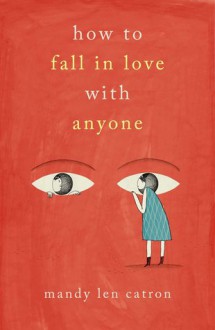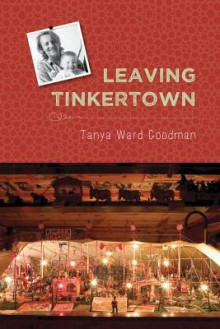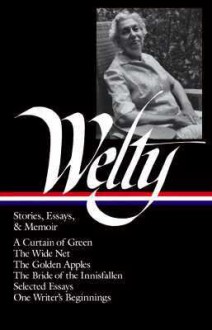
This is an enjoyable and thoughtful book: part memoir, part essay collection. The author reflects on love through the lens of her own experiences and those of her parents and grandparents, but also discusses the subject more broadly, referencing scientific research and analyzing books, movies, and fairy tales. She writes well and candidly, digging into the complexities of relationships rather than trying to prescribe one-size-fits-all advice or hand out easy answers. It is in some ways a very personal book, particularly as the author discusses the end of her 10-year relationship, but she keeps it classy. In discussing her relationships, she writes about how she felt and behaved, rather than dishing on her exes.
Rather than writing a traditional review, I’m going to list some of the ideas in the book that interested me:
- This book began with a Modern Love article, about a relationship that started with the author and an acquaintance asking each other a series of questions that made a couple fall in love in a lab experiment. But the title is misleading: the questions may not have been designed to create romance (they’ve apparently been used in decidedly non-romantic contexts, like increasing trust between police and communities). And the author and her boyfriend didn’t immediately start dating after that night. Instead the questions allowed them to get to know and trust each other quickly, setting the stage for a relationship if they wanted to pursue it, which they ultimately did.
- Some passages from the book suggest that Catron’s ultimate conclusion is that people ought to learn to love well rather than obsessing over finding the right person. But it isn’t so simple. She writes about a friend who, on the advice of a recently-married friend of his who champions choosing to commit for commitment’s sake, casts aside doubts about his relationship and proposes. But he backs out before the wedding, and the friend who gave the advice gets divorced a couple years later. The book never argues that if you just choose any decent person and treat each other well, the result will be lifelong marriage. It doesn’t give prescriptions about the ideal relationship, but rather things the author has observed along the way.
- There’s a word for the assumption that the true goal of all relationships is lifelong marriage: amatonormativity. Looking this up online led me to an interesting article from someone for whom romance isn’t a goal at all; Catron is more traditional, but she was able to enjoy romantic encounters more when she valued them for their own sake, rather than considering everything that didn’t end in marriage a failure.
- Historically speaking, our expectations for marriage have ascended Maslow’s hierarchy of needs. At one time marriage was mostly about economic stability, while we now expect our relationships to meet our needs for self-esteem and personal fulfillment. No wonder we struggle to find “the right person” while our ancestors managed to stay with the first person they were attracted to or the person their family chose.
- There’s a lot in the book about love stories, and how they affect real relationships. Storytelling is humanity’s way of organizing information and making sense of interactions with others; we need to see patterns to recognize what’s going on. Many people acknowledge the more obvious discrepancies between love stories and the real world, like the idea that once the two of you decide to get together, everything else is “happily ever after” rather than requiring effort.
- But some of the subtler refrains in love stories go unnoticed. For instance, the idea that love is a moral reward given to the most “deserving” people. For women, this often means being passive and “good,” i.e., pleasing those in authority, and not pursuing love directly. The idea that love will come on its own as a reward for quiet virtue led the author to quietly play the chameleon for years as a teenager rather than pursue what she wanted.
- All this makes me wonder about the current crop of love stories for teens, which often portray abusive or controlling relationships as romantic. Perhaps we can neutralize the messages of these stories by talking about the issue, so kids don’t use assume that’s the way love works. But no matter how much we talk about it, some readers are sure to miss the conversation and drink in those assumptions. This isn’t addressed in the book – fortunately for her, the author doesn’t seem to have had any truly awful relationships.
- People are very invested in their own love stories. A good “how we met” story can build social support for a relationship, which is healthy. But a meet-cute doesn’t predict the quality of the relationship, and some people get into bad relationships because their beginnings make great stories.
- Relationship advice is often geared to justifying the advisor’s decisions. Listening to a lot of advice can be destabilizing, if it suggests all sorts of deficiencies in you or your relationships (who cares if your significant other doesn’t bring you flowers, if this isn’t important to you). Advice is also usually geared toward keeping people together – see amatonormativity above – and at avoiding ambiguity; if a seemingly great relationship breaks down, we want an explanation as to why. But in reality, falling out of love may be as mysterious as falling in love.
In the end, though she’s in a happy relationship, it doesn’t seem like the author has it all figured out (probably nobody does), so this is definitely a personal reflection rather than an advice book. It didn’t knock my socks off, and the last chapter seemed off-base and elegiac despite containing nothing that needed an elegy. But it was enjoyable and interesting, smart and well-written. It’ll make you think a bit and won’t make you feel hopeless or inadequate, which seems like a good measure for a book about love.

 Log in with Facebook
Log in with Facebook 







